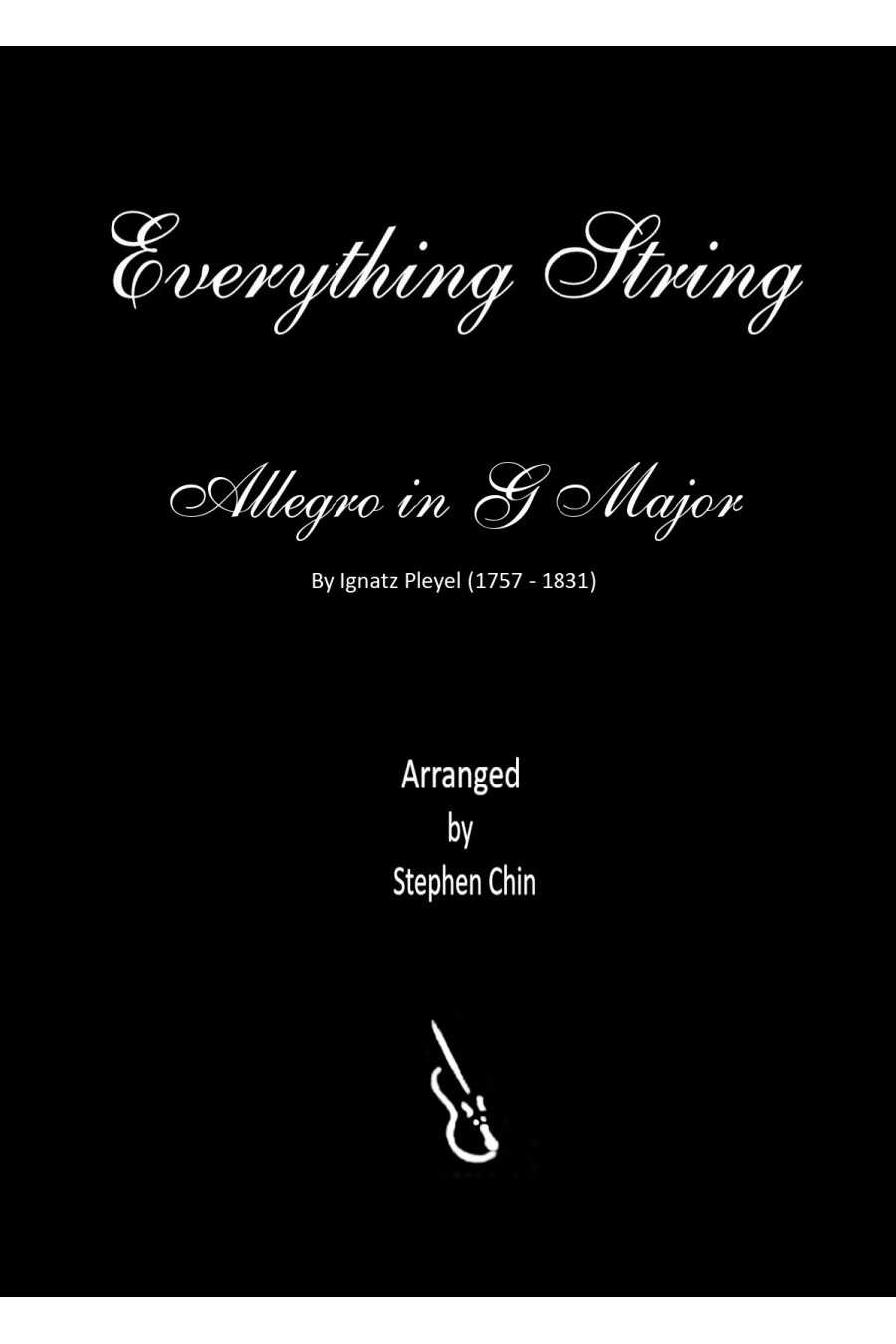

Pleyel, Haydn's student, had exceptional musical talent. The Duet Opus 8 no. 2 is a delightful and accessible piece highlighting different parts of the ensemble, showcasing diverse musical techniques like spiccato quavers, slurred string crossings, and martel crotchets. It's a great starting point for those who want to appreciate Classical music.
This piece of music is intended for a string orchestra with a difficulty level of grade 3.
Pleyel was one of Haydn's most illustrious students, known for his exceptional musical talent that was evident in his witty yet elegant compositional style across many of his works. The arrangement of the Duet opus 8 no. 2 is a delightful and accessible piece that introduces students to the disciplined and refined world of Classical period music. Each section of the composition highlights different parts of the ensemble, with techniques such as spiccato quavers, slurred string crossings, and martele crotchets providing a rich and diverse musical experience. Overall, this piece is a great starting point for those who want to learn and appreciate Classical music.
This piece of music is intended for a string orchestra with a difficulty level of grade 3.
Originally for string quintet, this piece was arranged by Boccherini for guitar and string quartet. Castanets add a Spanish touch. Boccherini explored diverse textures and string effects within the Classical Period. The music's elegance and vibrancy captivate players and audiences alike.
For String Orchestra Grade 3.5
Canon in D by Johann Pachelbel is a beautiful piece for string orchestra. This arrangement includes optional adaptations to suit different instruments and grade levels. A universally cherished work, now more inclusive!
Arcangelo Corelli (1653 - 1713) was a Baroque composer who set the standard for musical composition in his time. This piece is based on the last of his opus five violin sonatas, which includes twenty-four variations on the Spanish melody "La Follia". The arrangement presents five variations after the theme is introduced, with each upper-string section playing the tune fully against Corelli's original figurations. The main theme returns in an opulent manner.
For String Orchestra Grade 3
Australian summer holidays are magical! "Catamarans" captures the graceful movement of sailing vessels with wistful melodies. "Beach Party" is lively, depicting fun in the sand with driving quavers and unique textures. Both pieces feature harmonics and shifting in the first violins.
Featuring two pieces: Catamarans and Beach Party
Embark on a musical journey for young string players with a delightful composition specially crafted for beginning orchestras. This engaging piece introduces students to ensemble playing while promoting joy and a sense of accomplishment. With catchy melodies and expressive dynamics, it showcases the potential of aspiring musicians.
Stephen Chen shares, "I am fascinated by the different qualities of light throughout the day. In this set of pieces, the gentle mood of twilight and the mystery of moonlight contrast with the joy of warm sunshine. Various melodic and rhythmic elements, including pizzicato and tremolo, convey these impressions."
Pleyel, a renowned musician and entrepreneur in early 19th century Paris, wrote a beautiful piece for two violins in the late Classical style. The piece follows the sonata form and features a brooding first theme contrasted with an impish second theme played in staccato quavers. The movement ends with a lively duel between the violins, adding vibrancy and passion to the piece. Your orchestra will love it!
For String Orchestra Grade 3.5